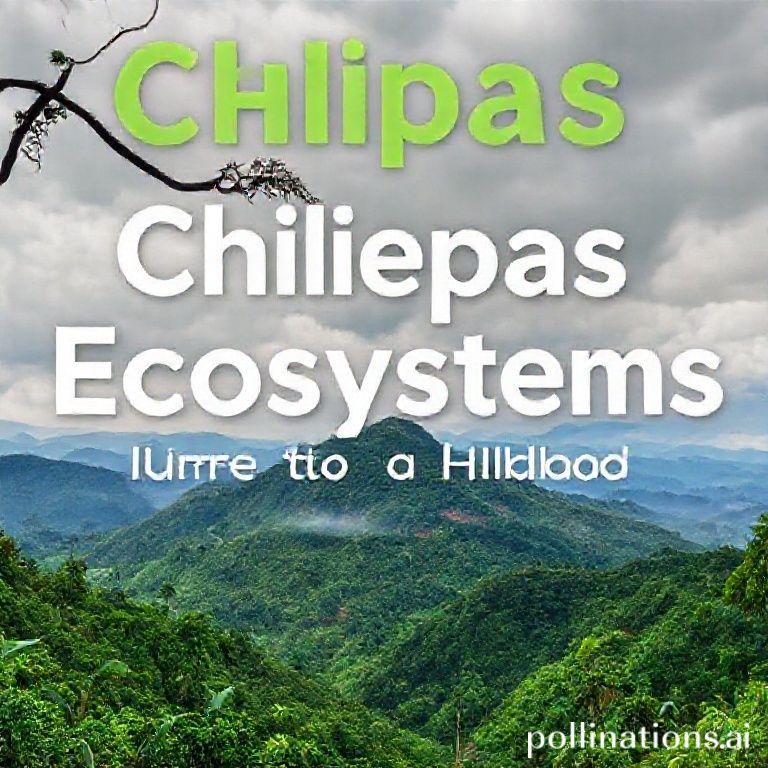Chiapas, Mexico’s southernmost state, is a land of breathtaking beauty and remarkable biodiversity. From the dense, humid rainforests bordering Guatemala to the cool, pine-clad highlands, Chiapas boasts an astonishing array of ecosystems. This rich tapestry of life makes Chiapas a true natural treasure, attracting scientists, nature enthusiasts, and travelers seeking to immerse themselves in the wonders of the natural world.
Understanding and appreciating the diverse ecosystems of Chiapas is key to responsible tourism and conservation efforts. Each environment plays a vital role in the region’s ecological balance, supporting unique flora and fauna, and contributing to the livelihoods of local communities.
The Lush Rainforests of Chiapas
The Selva Lacandona, a vast expanse of rainforest in eastern Chiapas, represents one of the largest remaining tropical rainforests in Mexico. This region is characterized by towering trees, a dense understory, and a remarkable abundance of plant and animal life. The rainforests of Chiapas are vital for regulating the region’s climate and water cycles, and they provide habitat for countless species, including jaguars, monkeys, toucans, and macaws.
Key Features of the Rainforest Ecosystem
- High Rainfall: The rainforest receives significant rainfall throughout the year, creating a humid environment ideal for plant growth.
- Biodiversity Hotspot: This area is home to an extraordinary variety of plant and animal species, many of which are endemic to the region.
- Ecological Services: The rainforest provides essential ecological services, such as carbon sequestration, water filtration, and erosion control.
The Highlands: A World of Cloud Forests and Pine-Oak Woodlands
In contrast to the humid lowlands, the highlands of Chiapas offer a cooler and more temperate climate. This region is characterized by cloud forests, pine-oak woodlands, and stunning mountain landscapes. The cloud forests, shrouded in mist and fog, support a unique array of epiphytes, orchids, and bromeliads. The pine-oak woodlands provide habitat for diverse bird species, mammals, and reptiles.
Exploring the Highland Ecosystems
- Cloud Forests: These forests are characterized by high humidity and frequent cloud cover, creating a unique environment for specialized plants and animals.
- Pine-Oak Woodlands: These woodlands are dominated by pine and oak trees, providing habitat for a variety of wildlife, including deer, squirrels, and birds of prey.
- Unique Climate: The highlands experience a cooler climate than the lowlands, with distinct wet and dry seasons.
Rivers, Lakes, and Wetlands
Chiapas is also blessed with an abundance of freshwater ecosystems, including rivers, lakes, and wetlands. These aquatic environments support a diverse array of fish, amphibians, reptiles, and birds. The Usumacinta River, one of the longest rivers in Central America, flows through the rainforests of Chiapas, providing vital transportation and sustenance for local communities. The Lagos de Montebello National Park, with its stunning turquoise lakes, is a popular destination for ecotourism.
Importance of Aquatic Ecosystems
- Water Resources: These ecosystems provide essential water resources for human consumption, agriculture, and industry.
- Habitat for Wildlife: Rivers, lakes, and wetlands provide habitat for a wide variety of aquatic and terrestrial species.
- Ecotourism Opportunities: These areas offer opportunities for ecotourism, such as kayaking, birdwatching, and fishing.
Conservation Challenges and Opportunities
Despite its natural beauty and biodiversity, Chiapas faces significant conservation challenges. Deforestation, driven by agriculture, logging, and urbanization, threatens the region’s forests and wildlife. Climate change is also impacting Chiapas, with rising temperatures, altered rainfall patterns, and increased frequency of extreme weather events. However, there are also many opportunities for conservation. Sustainable tourism, community-based conservation initiatives, and government policies can all play a role in protecting Chiapas’s unique ecosystems.
Conclusion
Chiapas’s diverse ecosystems, from its lush rainforests to its cool highlands and abundant waterways, represent a vital part of Mexico’s natural heritage. Understanding and appreciating these ecosystems is crucial for promoting responsible tourism, supporting local communities, and ensuring the long-term conservation of this remarkable region. By working together, we can protect the natural wonders of Chiapas for future generations to enjoy.
If you enjoyed this article, don’t forget to explore more inspiring stories on Life in Mexico!
IMAGE: A panoramic view of the Chiapas landscape, showcasing the contrast between the dense green rainforest in the foreground and the misty, blue-tinged highlands in the background. The sun is setting, casting a warm golden light across the scene. In the distance, a winding river snakes through the landscape. The overall mood is serene and awe-inspiring, capturing the beauty and diversity of Chiapas’s natural environment. Style: National Geographic photography.


